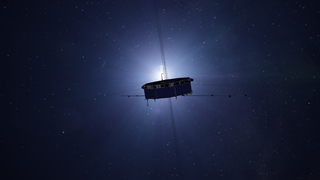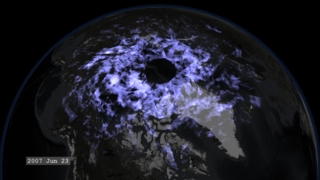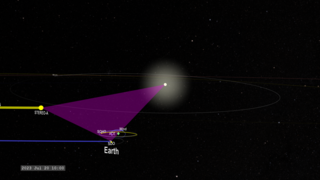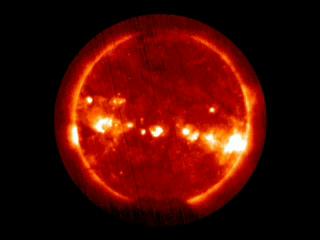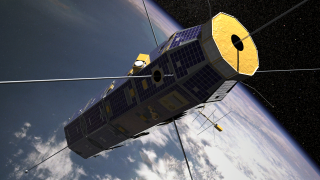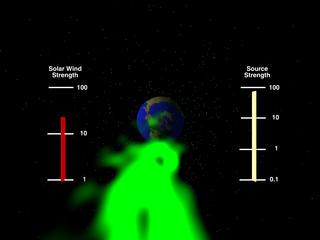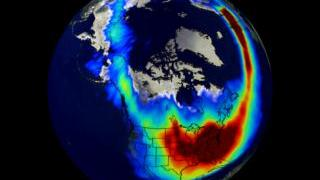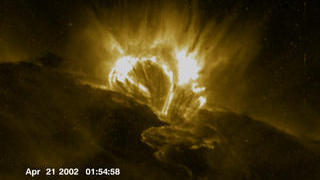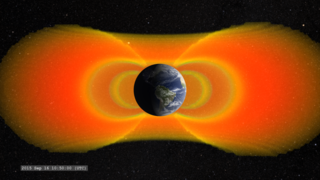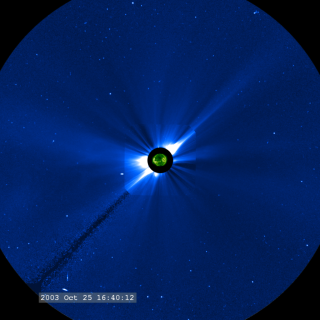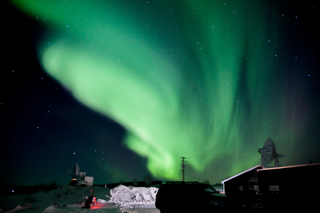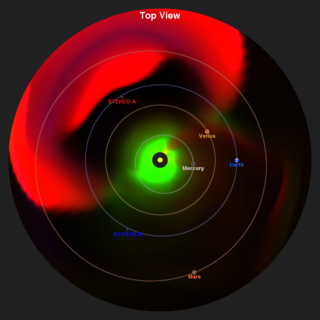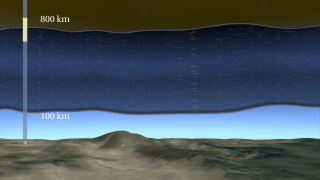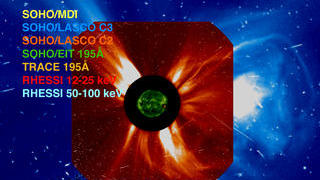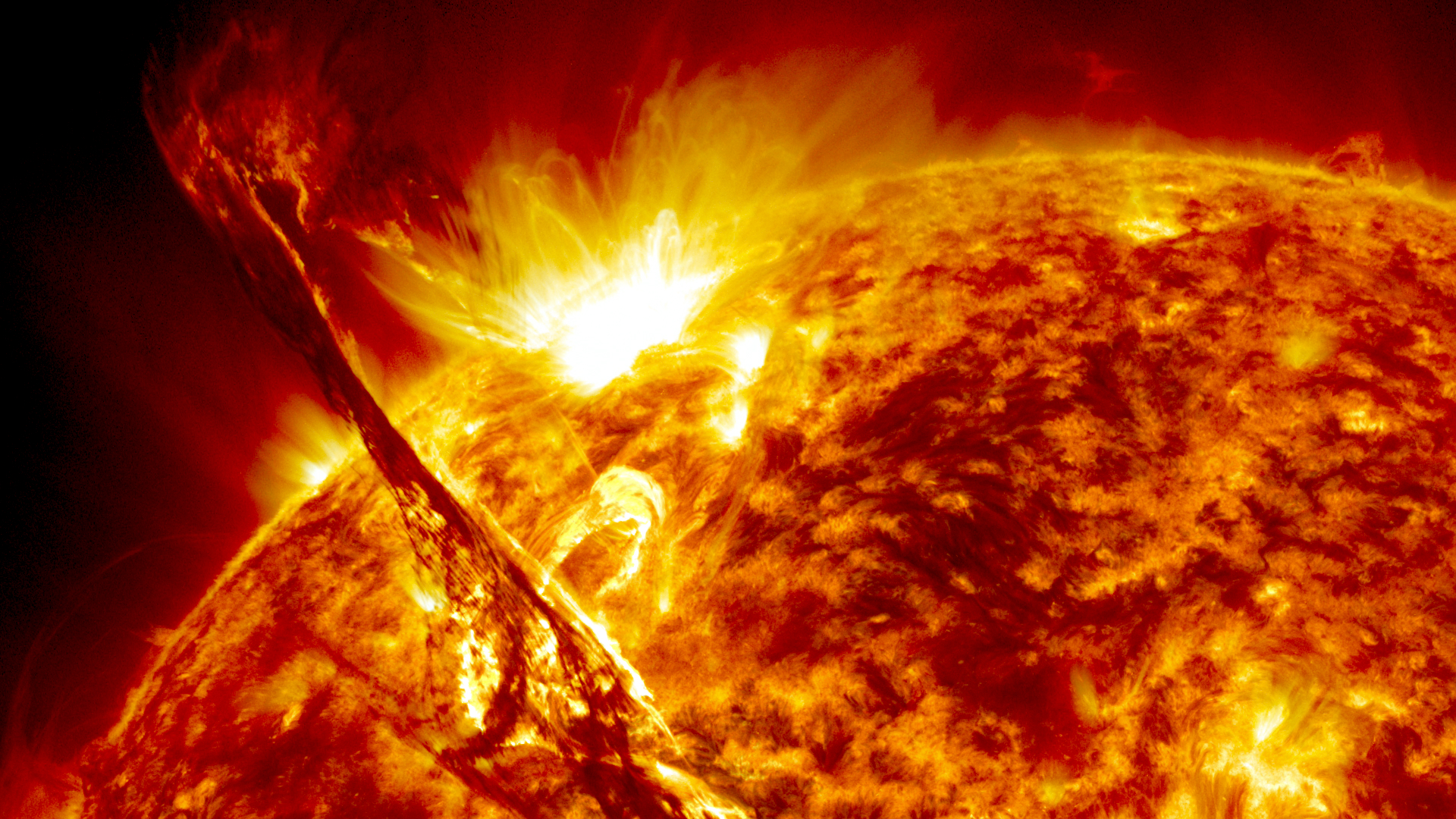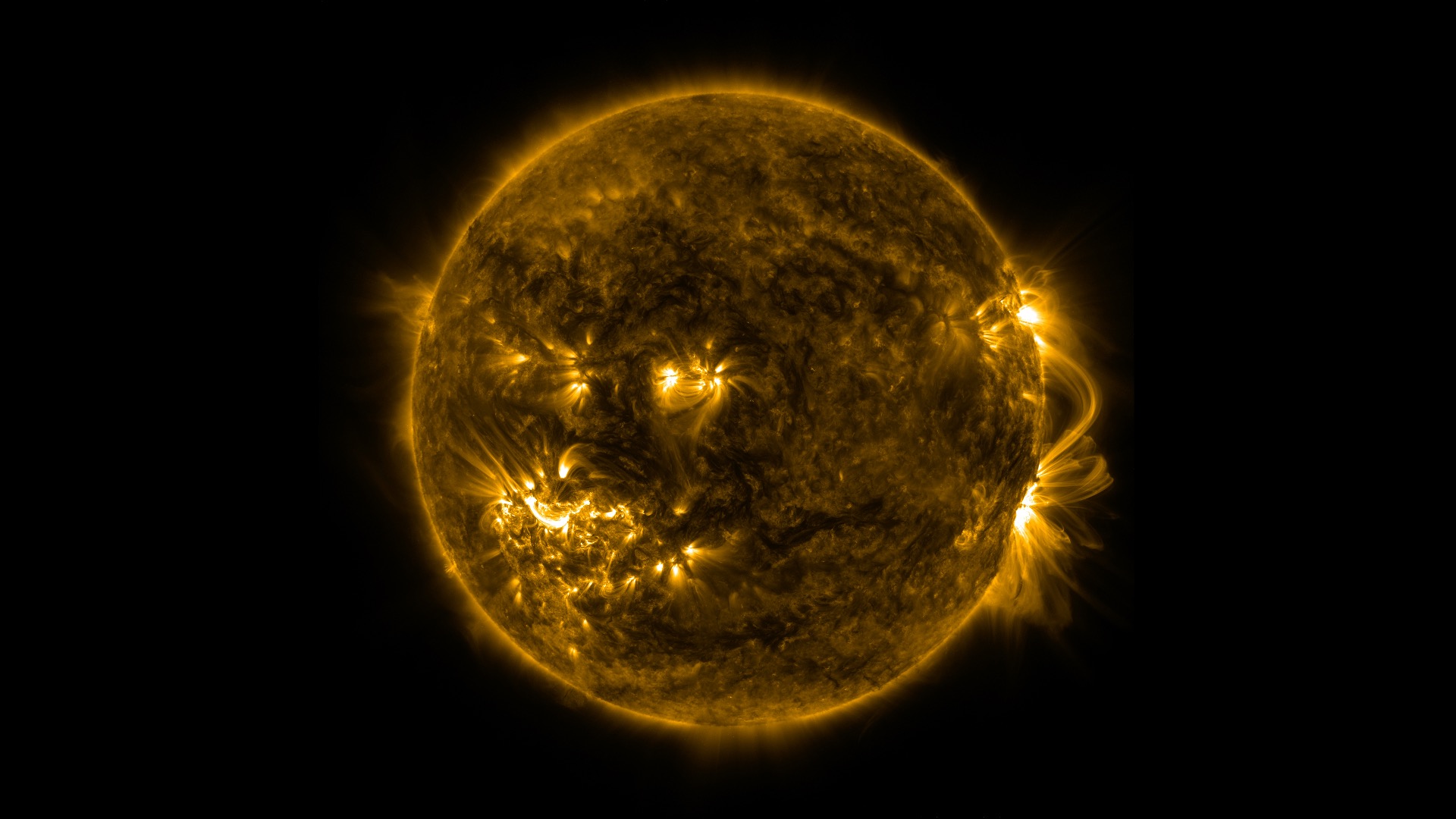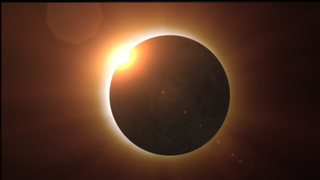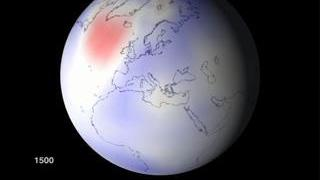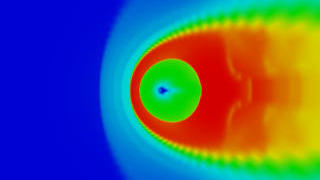NASA's Heliophysics Gallery
Overview
The Sun is a major influence on Earth's weather and climate. The focus of NASA's Sun-Solar System Connection is to understand this relationship from the perspective of the entire system.
You can find out more by visiting the Heliophysics Page, the NASA Living with a Star program, and the Solar-Terrestrial Probe web site.
Missions - Operational
- Gallery
- Gallery
- Gallery
- Gallery
- Gallery
- Link
- Gallery
- Gallery
- Link
- Link
- Link
- Link
Missions - Historical
- Link
Cluster II
A group of four satellites in formation flying to map the radiation environment of the radiation belts and magnetosphere. Launched in July and August 2000 it was a collaboration between ESA and NASA. NASA collaboration has ended, but the mission is still in operation.
Go to this link - Link
C/NOFS
The Communications/Navigation Outage Forecasting System (C/NOFS) was a satellite operated by the U.S. Air Force to study scintillation in Earth's ionosphere that could impact communications and navigation systems. It was launched April 2008 and its orbit decayed in November 2015.
Go to this link - Link
IMAGE
The Imager for Magnetopause to Aurora Global Exploration (IMAGE) was a NASA Medium Explorer mission that studied the magnetosphere's response to the solar wind. It operated from March 2000 to December 2005.
Go to this link - Link
Polar
A NASA spacecraft for studying the polar magnetosphere and aurorae. It operated from February 1996 to April 2008.
Go to this link - Link
RHESSI
The Rueven Ramaty High Energy Solar Spectroscopic Imager (RHESSI) observed X-rays from solar flares in the 4 kiloelectron volt (keV) to over 1 million electron volts (MeV). It launched on February 9, 2002 and last contact was April of 2018.
Go to this link - Link
SORCE
The Solar Radiation and Climate Experiment (SoRCE) measured the broad spectrum of incoming solar radiation, from near-infrared through visible, ultraviolet, and X-ray. It was operational from January 2003 through February of 2020.
Go to this link - Link
TRACE
The Transition Region and Coronal Explorer (TRACE) took high-resolution imagery of the Sun at a number of ultraviolet wavelengths. It operated in sun-synchronous orbit from April 1998 through June 2010 when its functionality was largely replaced by Solar Dynamics Observatory (SDO).
Go to this link
Space Weather
Flares and CMEs and Auroras, Oh My!
CME Collection
Go to this pageClassic Light-Bulb CMECoronal mass ejection images don't get much clearer than this. The European Space Agency and NASA's Solar and Heliospheric Observatory witnessed this CME on Feb. 27, 2000, from a rare side view. Looking like a light-bulb, this classic image shows the core of the CME, surrounded by a cavity, and then bordered by the leading edge of the CME.This image is what’s called a coronagraph which blocks the light coming from the sun, in order to see the much fainter light from around the sun. Credit: ESA/NASA/SOHO || cmeweek1_c3full.gif (1024x1024) [910.5 KB] ||
- Link
Solar Wind
The steady outflow of charged particles, mostly electrons, protons and helium ions and nuclei, from the solar surface. It drives the 'weather' throughout the solar system.
Go to this link Sunspots
Go to this pageLarge cooler regions on the solar photosphere where magnetic flux is concentrated.
- Link
Coronal Mass Ejections
Large eruptions of particles from the Sun driven by energetic events in the solar atmosphere. These events can pose hazards to crewed and un-crewed missions.
Go to this link - Link
Magnetosphere
The magnetic 'bubble' surrounding Earth, and some other planets. It is responsible for trapping charged particles which generate aurora and can disrupt spacecraft in the near-planetary environment.
Go to this link Space Weather Modeling
Go to this pageEnergetic events on the Sun can have dramatic impact on Earth and its magnetosphere. These natural events can have significant effects on Earth and space-based technologies that can cause anything from inconveniences (such as minor communications and power disruptions) to high-impact events that have significant political and economic implications (outages of large sections of the electrical power grid and other support infrastructure). To better meet these challenges, mathematical models of the heliospheric and geospace environment are under development to better forecast these solar energetic events and their impacts on Earth. The visualizations here illustrate two models generated by the CCMC for modeling space weather events. The CCMC hosts many different computational models. Both models were generated based on a single coronal mass ejection (CME) event in December 2006. Enlil: The Enlil model is a time-dependent 3-D magnetohydrodynamic (MHD, Wikipedia) model of the heliosphere. In these simulations, the model covers a torus-like region around the Sun, with the inner edge at about 0.1 astronomical units (AU) (about 22 solar radii) from the Sun and the outer edge extends beyond the orbit of Mars (1.5 AU). The model extends to 60 degrees above and below the solar equator. The model propagates the changes in particle flows and magnetic fields. BATS-R-US: BATS-R-US is also an MHD model of plasma from the solar wind moving through the Earth's magnetic dipole field. The model is initialized using measurements of the solar wind density, velocity, temperature, and magnetic field from satellites orbiting L1, such as ACE.
Solar Science
Studying the Sun itself.
- Link
Sun
A variety of views of the Sun and it's surrounding environment, usually taken from NASA missions.
Go to this link The Dynamic Solar Magnetic Field
Go to this pageA visualization of the slow changes of the solar magnetic field over the course of four years. || PFSSbasicView_inertial.HD1080i.0400_print.jpg (1024x576) [168.7 KB] || PFSSbasicView_inertial.HD1080i.0400_searchweb.png (180x320) [78.9 KB] || PFSSbasicView_inertial.HD1080i.0400_thm.png (80x40) [5.8 KB] || PFSSbasicView_inertial_1080p30.webm (1920x1080) [18.1 MB] || PFSSbasicView (1920x1080) [128.0 KB] || PFSSbasicView_inertial_1080p30.mp4 (1920x1080) [326.6 MB] || PFSSbasicView_inertial_1080p10.mp4 (1920x1080) [470.2 MB] || PFSSbasicView_HD1080p10.mov (1920x1080) [804.4 MB] || PFSSbasicView_inertial_1080p30.mp4.hwshow [232 bytes] ||
- Link
SDO Jewelbox
Views of the Sun from multiple wavelengths (mostly ultraviolet not visible from the ground) taken by Solar Dynamics Observatory (SDO).
Go to this link The Solar Cycle
Go to this pageSolar Cycle 25 has begun. The Solar Cycle 25 Prediction Panel announced solar minimum occurred in December 2019, marking the transition into a new solar cycle. In a press event, experts from the panel, NASA, and NOAA discussed the analysis and Solar Cycle 25 prediction, and how the rise to the next solar maximum and subsequent upswing in space weather will impact our lives and technology on Earth.
A new solar cycle comes roughly every 11 years. Over the course of each cycle, the star transitions from relatively calm to active and stormy, and then quiet again; at its peak, the Sun’s magnetic poles flip. Now that the star has passed solar minimum, scientists expect the Sun will grow increasingly active in the months and years to come. Understanding the Sun’s behavior is an important part of life in our solar system. The Sun’s outbursts—including eruptions known as solar flares and coronal mass ejections—can disturb the satellites and communications signals traveling around Earth, or one day, Artemis astronauts exploring distant worlds. Scientists study the solar cycle so we can better predict solar activity.
Heliosphere
That not-so-empty space between the solar corona and the boundary of
interstellar space.
- Link
Heliosphere
That not-so-empty space between the solar corona and the boundary of
Go to this link
interstellar space.
Magnetospheres
The magnetic fields of small and large bodies around the solar system alter the space plasma near that body.
- Link
Magnetosphere
The Earth's magnetic dipole field helps form a protective shield, called the magnetosphere, around the planet. This 'shield' deflects much of the charged particle radiation emitted by the Sun.
Go to this link Radiation Belts & Plasmapause
Go to this pageVisualization of the radiation belts with confined charged particles (blue & yellow) and plasmapause boundary (blue-green surface) || Earth_BeltsPlasmapauseParticles_Oblique.noslate_GSEmove.HD1080i.0400_print.jpg (1024x576) [136.6 KB] || Earth_BeltsPlasmapauseParticles_Oblique.noslate_GSEmove.HD1080i.0400_web.png (320x180) [96.2 KB] || Earth_BeltsPlasmapauseParticles_Oblique.noslate_GSEmove.HD1080i.0400_searchweb.png (320x180) [96.2 KB] || Earth_BeltsPlasmapauseParticles_Oblique.noslate_GSEmove.HD1080i.0400_thm.png (80x40) [6.9 KB] || BeltsPlasmapauseParticles_HD1080.mov (1920x1080) [28.3 MB] || Earth_BeltsPlasmapauseParticles_Oblique_HD1080.mp4 (1920x1080) [16.6 MB] || BeltsPlasmapauseParticles_HD720.mov (1280x720) [10.6 MB] || 1920x1080_16x9_30p (1920x1080) [0 Item(s)] || Earth_BeltsPlasmapauseParticles_Oblique_HD1080.webm (960x540) [2.3 MB] || BeltsPlasmapauseParticles_iPod.m4v (640x360) [3.7 MB] || radiation-belts--plasmapause.hwshow [342 bytes] ||
- Link
Comparative Magnetospheres
Earth's magnetic field responds differently depending on the intensity of particle radiation from the Sun. Here we compare the magnetosphere's response to a fairly average coronal mass ejection (CME) and a very strong coronal mass ejection.
Go to this link - Link
Planetary Magnetospheres
Earth isn't the only solar system body with an internally generated magnetic field. Here are some visualizations of simplified versions of magnetospheres of the giant outer planets.
Go to this link
Ionosphere, Thermosphere, Mesosphere (ITM)
Interesting physics occurs at the boundary layers between the electrically neutral atmospheres of planets and the plasma of space.
Interface to Space
Go to this pageThe ionosphere is layer of the upper atmosphere (60-1000 km up) where the neutral atoms and molecules of the lower atmosphere transition to the plasma of space.
NASA Heliophysics Resources
We live in an exciting environment: the heliosphere, the exotic outer atmosphere of a star. The heliosphere is an immense magnetic bubble that extends well beyond the orbit of Pluto. This bubble contains our solar system, solar wind, and the entire solar magnetic field. The heliosphere is also the one part of the cosmos accessible to direct scientific investigation; our only hands-on astrophysical laboratory. As our society becomes ever more dependent on technology, we are increasingly susceptible to space weather disturbances in this tumultuous region. We call the study of the connections between the sun and the solar system, Heliophysics.'
- Gallery
- Gallery
- Gallery
- Gallery
- Gallery
- Gallery
- Gallery
- Produced Video
- Produced Video
- Gallery
Selected Keywords & Series
- Link
Solar Eclipse
A solar eclipse occurs when the Moon (or other celestial object) passes between the Sun and Earth and the totally obscures the Sun.
Go to this link - Link
Transit
A transit is very similar to an eclipse in the sense that with respect to the observer, a nearer object passes in front of a more distance object. However, in a transit, the nearer object only partially obscures the more distant object.
Go to this link - Link
Under the Sun
Helioseismology uses the vibrations of the solar photosphere to map the solar interior, kind of like a sonogram.
Go to this link




